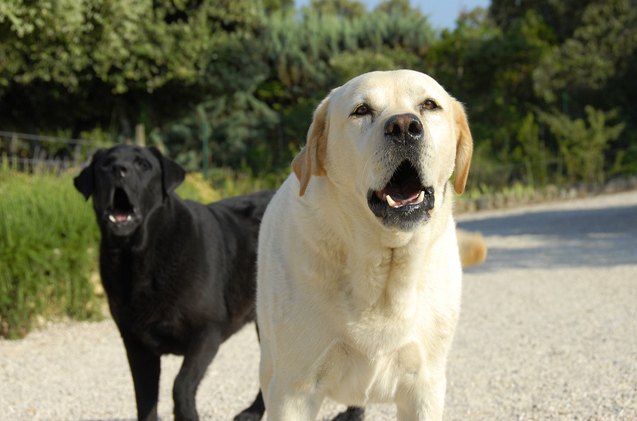Study: Dogs Talk To Us With Growls and Barks

My dog is a diva. When she wants you to pet her, she comes right to you, gives a low little grumble that says, “You know what I want,” and waits. I know exactly what she wants, and like a well-trained human, I do it! Now research from Eotvos Lorand University in Hungary backs up the belief that dogs do indeed communicate with their humans using specific barks and growls.
Related: Audience Dog Program Helps Students Overcome Fear of Public Speaking
The study had 40 volunteers listen to various growls that were recorded from 18 different dogs who were doing different things. The growls were from dogs who were guarding their food, playing tug-of-war and facing a threatening stranger.
The participants were able to correctly decipher what the growl samples meant 63 percent of the time, which is too significant to be just chance, the researchers say. Dr. Tamas Farago said that additionally, women were better than men were at deciding what the growls meant, specifically when a dog was being threatening.
The researchers also looked at whether or not specific growls were more recognizable than others. The volunteers were able to identify the ‘play’ growls 81 percent of the time, but less able to recognize the other two growls, though they still recognized those appropriately more than 50% of the time.
The study made notes about the descriptions of the growls. They found that when dogs were playing, the sounds were shorter and less separated than when the dogs were threatened or aggressive. The pitches of each growl were also significantly different, the scientists noted.
Related: Study: Dogs Respond to Baby Talk
Part of the research also included volunteers rating growls on how they believed the dogs ‘felt’ using aggression, fear, despair, happiness and playful as the descriptors. As well as identifying growl contexts, the volunteers also had to rate growls on a sliding scale according to five emotional states – aggression, fear, despair, happiness and playfulness. They believe that context plays into how dogs use their growls, and concluded that when dogs were guarding or protecting, they were honest in their pitch and tone of growl. Conversely, when they were playing or not sure about a stranger, they produced growls that varied in different parameters as if they were ‘feeling out’ the situations.
Still, humans were able to understand what the dog meant, even with the variation in pitch and frequency, and responded with appropriate reaction. So, next time your dog tells you she wants a belly rub? Do it. Because science says you KNOW that’s what she wants!

More by Lori Ennis























